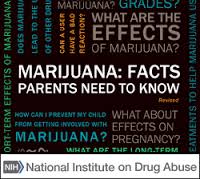Blog Archives
Marijuana And Its Impact On Adolescents
|
|
E-Cigs and Teens
New research suggests e-cigarette use among young people could be a gateway to conventional smoking.
Researchers looked at 2,530 students from 10 Los Angeles public schools. They asked the teenagers about their smoking and vaping activities and found that teens who had used e-cigarettes were more likely to report using tobacco products over the next year compared to teens who had never used e-cigarettes. The findings were published Tuesday in the journal JAMA.
The researchers cannot conclude from their data that using e-cigarettes leads a teen to use other tobacco products. More research is needed to determine if the link is causal. However, they suggest it’s unlikely that the number of teens who use both e-cigarettes and other tobacco products can be entirely attributed to teens already smoking and then trying e-cigarettes later on. “These results raise the possibility that the association between e-cigarette and combustible tobacco use initiation may be bidirectional in early adolescence,” the authors write.
Some view e-cigarettes as a healthier alternative to tobacco. However, both e-cigarettes and tobacco products contain nicotine, which is addictive, and some research shows that e-cig flavors are dangerous and that the devices, too, produce potentially dangerous byproducts when heated. Since data suggests that teenagers are increasingly using e-cigarettes, some public health experts are worried.
“Adolescents may be especially susceptible to develop nicotine addiction after e-cigarette exposure because their brains are still developing and are particularly sensitive to nicotine,” writes Dr. Nancy A. Rigotti of Massachusetts General Hospital and Harvard Medical School in a corresponding editorial.
The researchers also note teens may be more likely to use e-cigarettes before other combustible tobacco products due to a perception that they are not harmful or addictive. The fact that e-cigarettes are sold in different flavors can be attractive to young people, the authors argue, and in some cases it remains easy for teens to get access to them due to a lack of regulation.
Marijuana, Talk About It
Know! What’s Up With WeedMarijuana has become a regular subject on the nightly news, along with heated debates between those for legalization of the drug and those against it. It seems everyone is talking about marijuana, including our children. Depending on what state you’re in, the laws surrounding “weed” will vary, as well as attitudes and perceived risk of using the drug.
Regardless of where your state stands on weed, where do you stand on weed? Do your children know where you stand? Are you even sure where you stand? If you’re unsure on the subject, more than likely, your children are too, which can open the door to adolescent experimentation.
In the U.S., as state laws surrounding marijuana began to loosen, attitudes began to soften. And as perceived risk of marijuana began to decrease, use of the drug increased. While this is unfortunate news, there is hope. Studies show that as knowledge on marijuana increases, use of the drug decreases.
With this in mind, we need to know what’s up with weed and share that information with our children.
Marijuana has the potential to negatively impact adolescent brain development and function and cause various breathing problems. Marijuana use also changes the way many people think, impacts the choices they make and alters the way they behave.
Marijuana use in the short-term:
Marijuana use in the long-term has been linked to:
This is certainly not what any of us want for our children. Federal law says one thing, some state laws say another. Regardless, your voice andyour actions matter. Your parental influence is powerful when it comes to your children and the decisions they make. Talk to your children about the dangers of marijuana.
You can get the conversation started by asking your child what he/she knows about marijuana, and his/her opinion on the topic. Listen closely and keep your cool even if your son or daughter’s opinion is not in line with yours. This is your opportunity to provide the facts, make your stance known and your expectations for non-use clear.
|
Marijuana Conversation For Parents
Reminder: You’re invited to join us tonight, April 20, from 8 p.m. – 8:30 p.m. EDT for a special live Facebook Chat with Heather Senior, LCSW, Partnership Parent Support Network Manager. She will answer your questions to help you better navigate the changing marijuana landscape and have productive conversations with your teens.
To participate, please visit and “Like” the Partnership for Drug-Free Kids’Facebook page at 8 p.m. EDT this evening. The chat will take place right under the announcement image in the comment thread. Please make sure to refresh your browser throughout the chat to view all comments in real time.
We invite you to submit questions in advance and Heather will do her best to answer them during the chat.
For additional support on what you need to know to talk with your teen about marijuana, visit drugfree.org/MJTalkKit and follow the conversation online at#MJTalkKit.
Marijuana and Effects on Females
In the first ever study to assess gender differences in sensitivities to THC, the active ingredient in marijuana, researchers found that smoking the more concentrated cannabis of today is riskier for women, thanks to the hormone estrogen.
In the National Institute on Drug Abuse (NIDA)-funded study, led by Professor Rebecca Craft of Washington State University, researchers focused on the pain-relieving effects of THC in both male and female rats and found that after 10 days of treatment, females showed significantly greater tolerance to the substance than the males.
Although scientists in the past have shied away from studying the effect of THC in females due to hormone productivity, Craft has been researching drug sensitivities in females for quite some time. In this study, she and her team “routinely manipulate hormones and follow females across their cycles to see if their drug sensitivities change along with their hormones. And they do… very frequently,” she said.
Because it is known that females are more sensitive to THC, doses were adjusted so they were 30 percent lower than those of the males. However, the females still developed more tolerance.
“What we’re finding with THC is that you get a very clear spike in drug sensitivity right when the females are ovulating – right when their estrogen levels have peaked and are coming down,” said Craft.
Because the females develop tolerance to THC more quickly, they have increased vulnerability to negative side effects such as anxiety, paranoia and addiction.
In addition, researchers found that a low dose of THC did not disrupt the reproductive cycles of the female rats, which is a subject that has been debated for a long time, but also needs more study.
In previous studies, it was shown that women were more prone to marijuana abuse and dependence than men. In women, withdrawal symptoms of irritability, sleep disruption and decreased food intake was shown to be more severe. Women also have a higher likelihood of relapsing when quitting the drug.
Craft added that the concentrations of THC in today’s marijuana is double or triple those from the 1960s and 1970s.
“Marijuana is very different than it was 40 years ago. It’s much higher in THC and lower in cannabidiol,” she explained. “We’re more likely to see negative side effects today like anxiety, confusion, panic attacks, hallucinations or extreme paranoia. And women are at higher risk.”
Talking to Teens About Marijuana
Talking to Your Kids—Communicating the Risks

Why do young people use marijuana?Children and teens start using marijuana for many reasons. Curiosity and the desire to fit into a social group are common ones. Some teens have a network of friends who use drugs and urge them to do the same (peer pressure). Those who have already begun to smoke cigarettes or use alcohol—or both—are at heightened risk for marijuana use as well. And children and teens who have untreated mental disorders (such as ADHD, conduct disorder, or anxiety) or who were physically or sexually abused are at heightened risk of using marijuana and other drugs at an early age.
For some, drug use begins as a means of coping—to deal with anxiety, anger, depression, boredom, and other unpleasant feelings. But in fact, being high can be a way of simply avoiding the problems and challenges of growing up. Research also suggests that family members’ use of alcohol and drugs plays a strong role in whether children/teens start using drugs. Parents, grandparents, and older brothers and sisters are models that children follow.
So indeed, all aspects of a teen’s environment—home, school, and neighborhood—can influence whether they will try drugs.
How can I prevent my child from using marijuana? There is no magic bullet for preventing teen drug use. But research shows parents have a big influence on their teens, even when it doesn’t seem that way! So talk openly with your children and stay actively engaged in their lives. To help you get started, below are some brief summaries of marijuana research findings that you can share with your kids to help them sort out fact from myth, and help them make the soundest decisions they can. These facts were chosen because they reflect the questions and comments that we receive from teens every day on our teen Web site and blog—what teens care about. Following this brief summary of research evidence, FAQs and additional resources are provided to equip you with even more information.
Did you know…
Marijuana can be addictive. Repeated marijuana use can lead to addiction—which means that people often cannot stop when they want to, even though it undermines many aspects of their lives. Marijuana is estimated to produce addiction in approximately 9 percent, or about 1 in 11, of those who use it at least once. This rate increases to about 1 in 6, or 17 percent, for users who start in their teens, and 25–50 percent among daily users. Moreover, 4.3 million of the more than 7.3 million people who abused or were addicted to any illegal drug in 2012 were dependent on marijuana. And among youth receiving substance abuse treatment, marijuana accounts for the largest percentage of admissions: 74 percent among those 12–14, and 76 percent among those 15–17.
Marijuana is unsafe if you are behind the wheel. Marijuana compromises judgment and affects many other skills required for safe driving: alertness, concentration, coordination, and reaction time. Marijuana use makes it difficult to judge distances and react to signals and sounds on the road. Marijuana is the most commonly identified illegal drug in fatal accidents (showing up in the bloodstream of about 14 percent of drivers), sometimes in combination with alcohol or other drugs. By itself, marijuana is believed to roughly double a driver’s chances of being in an accident, and the combination of marijuana and even small amounts of alcohol is even more dangerous—more so than either substance by itself.
Marijuana is associated with school failure. Marijuana has negative effects on attention, motivation, memory, and learning that can persist after the drug’s immediate effects wear off—especially in regular users. Someone who smokes marijuana daily may be functioning at a reduced intellectual level most or all of the time. Recent research even suggests that people who begin using marijuana heavily as teens may permanently lose an average of 8 points in IQ by mid-adulthood. Compared with their nonsmoking peers, students who smoke marijuana tend to get lower grades and are more likely to drop out of high school. Long-term marijuana users report decreased overall life satisfaction, including diminished mental and physical health, memory and relationship problems, lower salaries, and less career success.
High doses of marijuana can cause psychosis or panic during intoxication. Although scientists do not yet know whether the use of marijuana causes mental illness, high doses can induce an acute psychosis (disturbed perceptions and thoughts, including paranoia) or panic attacks. In people who already have schizophrenia, marijuana use can worsen psychotic symptoms, and evidence so far suggests there is a link between early marijuana use and an increased risk of psychosis among those with a preexisting vulnerability for the disease.




